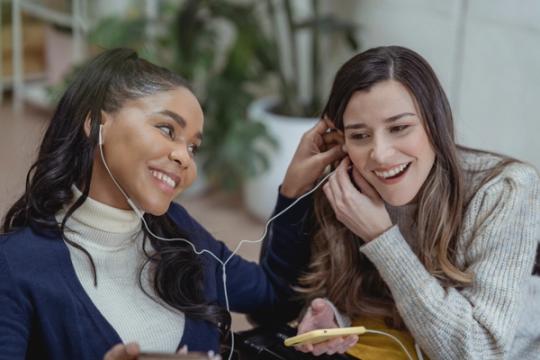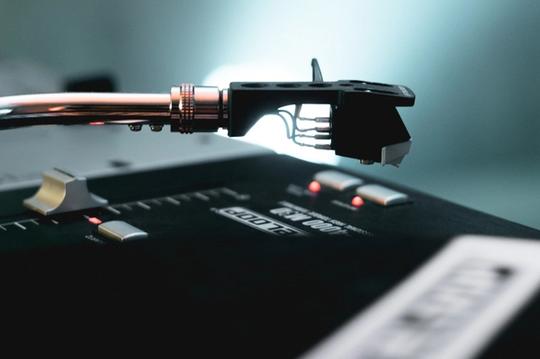
Jump into the world of video podcasting! Explore 9 irresistible reasons to start today, and unlock the full potential of your content creation journey.
Video podcasting has emerged as a powerful and engaging medium among the myriad options available to creators. At least 32% of Americans love listening to a podcast in video format more than audio. Incorporating video in the podcast format helps reach a younger audience and offers more engaging content than audio.
A video podcast combines the best elements of traditional audio podcasts with the visual appeal of video content, creating a unique and compelling platform. One in three podcast listeners prefer listening to their favorite podcasters on YouTube followed by a 24% who use Spotify. We will explore nine compelling reasons you should consider starting a video podcast and its benefits to your show.
What Is A Video Podcast?
It refers to a podcast that has a visual element in it. The traditional meaning of a podcast was audio content only and was to be an audio that listeners could download and listen to, unlike the regular conventional radio. In video podcasting, you will enjoy both video elements and the audio, making it equally engaging.
9 Reasons to Start a Video Podcast
1. Enhanced Engagement
Did you know the human brain is capable of processing images 60,000 times faster than a text? One of the primary advantages of video podcasting is its ability to engage viewers on multiple levels since people remember 65% of what they see compared to 10% of what they hear. While audio podcasts rely solely on auditory cues, video podcasts incorporate visuals, making the content more immersive and appealing.
Visual elements, such as facial expressions, gestures, and on-screen graphics, enhance the viewer's understanding and connection with the content. This added dimension of engagement can captivate a wider audience and keep them coming back for more. Most people love looking at non-verbal communication as it makes the content relatable.
2. Wider Reach
With the popularity of video-sharing platforms like YouTube and Vimeo, your content can reach millions of potential viewers worldwide. Unlike audio-only podcasts, which are limited to platforms like Apple Podcasts or Spotify, video podcasts have a broader distribution network. It makes it easier for your content to gain visibility and attract a global audience.
Social media platforms engage people more through visual content than audio. That is why its algorithm, by default, mutes the audio first, and you can watch a video without sound until you click on it. Adding a video increases audience engagement and brings more followers to your podcast channel, no matter their geographical location.
3. Versatility in Content
Video podcasts offer creators a wide range of content possibilities. You can seamlessly integrate various formats into your video podcast, such as interviews, demonstrations, animations, and live streams. This versatility allows you to experiment with different styles and cater to diverse audience preferences. Whether you want to educate, entertain, or inspire, video podcasting offers endless possibilities to showcase creativity.
4. Increased Monetization Opportunities
Monetization is a significant consideration for content creators. Video podcasts provide multiple avenues for generating income, such as ad placements, sponsored content, merchandise sales, and crowdfunding through platforms like Patreon. The visual nature of video content also makes it more appealing to potential sponsors, who may be eager to partner with you to reach your engaged audience.
5. Enhanced Branding
Video podcasts can be a powerful tool for personal or brand promotion. Your video podcast becomes a visual representation of your or your brand's identity. You can establish a strong and memorable online presence with consistent branding elements such as logos, graphics, and a unique style. Building a recognizable brand can increase your audience's trust and credibility.
It is also a chance to repurpose your content. You can record content once and put it on different platforms such as YouTube, Facebook, and other social media platforms. Invest in the right gear and editing tools to keep your video content attractive. It enhances your brand and also brings new clients your way.
6. Educational Value
Video podcasts are particularly effective for educational content. Whether teaching a new skill, explaining complex concepts, or sharing industry insights, combining audio and visual elements enhances the learning experience. Visual aids, diagrams, and real-life demonstrations can clarify information and ensure your audience grasps the subject matter more effectively.
7. Improved SEO and Discovery
Video content tends to perform well in search engine results, making it easier for potential viewers to discover your content. Optimizing your video podcast's title, description, and tags with relevant keywords allows you to boost your content's visibility on search engines and video-sharing platforms. As a result, you'll attract more organic traffic and grow your audience.
8. Networking Opportunities
Video podcasting provides an excellent opportunity to connect with industry experts, influencers, and like-minded individuals. Hosting guests on your podcast helps in building valuable relationships and expanding your professional network. These connections can lead to collaborations, cross-promotions, and increased visibility within your niche.
9. Creative Expression
Video podcasting allows you to express your creativity in unique ways. The visual aspect of the medium enables you to experiment with visual effects, animations, and storytelling techniques. You will come up with a distinctive visual style that sets your podcast apart from others and showcases your creative talents. Based on your discussion, there is an opportunity to use different visually appealing items without distracting the audience.
The Difference Between Creating a Video Podcast and One with Audio Only
A video podcast adds more complexities to your podcast due to the planning that takes place from production to execution and the distribution phases as indicated here:
Pre-planning
There are many ways of turning a podcast into a video, including proper planning. One of the most common methods is recording yourself when shooting the podcast to avoid doing double work. Therefore, you will have much to add to the pre-planning method, including determining the tools you will use when recording gestures and facial expressions.
Sometimes, practicing in front of a mirror makes it easy. Some people are not too confident in front of the cameras, and practicing before reduces anxiety and helps you plan your recording schedule.
Execution
Conduct a thorough check to see if you have all the necessary tools. Some of the required tools for video podcasting include:
- Cameras
- Microphones
- The green scene, when necessary
- Lights
- Headphones
- A quiet and appealing room
The Distribution Process
Ensure you distribute your podcast on platforms with a broad reach. Social platforms like Facebook, Instagram, and YouTube are some of the best platforms for video podcasters. Therefore, video podcasting needs more planning than audio to ensure the process is less tiring and interesting.
4 Ways of Recording a Video Podcast
Before recording a video format, select one of the most favorable formats for your content. Here are the four main formats:
1. Static Recording
The easiest method is having a static image; all you have to do is convert audio to video podcasts. A static image will be on the screen as the listeners play the audio.
Pros
- It is an easy and fast method.
Cons
- The video is less engaging than other formats.
- There is nothing special about this format, as it only involves uploading your audio fluke on a video platform.
2. Remote Interviews
It happens when you capture images of different speakers that are not in the same room. You will see speakers all at once in this format, but other tools will allow you to maximize each person at a time.
Pros
- It does not require special equipment to record.
- It is an ideal way to get video content if the guests cannot be in the same room.
Cons
- The method relies on high-quality recordings; therefore, one should have a strong internet connection.
- If the recording software is faulty, you will get an episode requiring much editing.
3. In-Studio Recording
You have an opportunity to set up a camera inside the recording studio. The conversation continues between guests and hosts, and you might need multiple cameras to capture all angles.
Pros
- It is an easy process.
- You only need to add a video file to your audio when editing.
Cons
- You might have to buy more than one camera.
- You spend most time editing if you have multiple-angle shots.
4. Interview and b-roll
It combines some of your archives and b-roll footage for your standard podcast. It could be a guest movie clip, chart, or news article that you will edit and embed in the podcast.
Pros
- It is a highly engaging format for all listeners.
Cons
- It is time-consuming as it requires too much time to edit.
Start Your Video Podcast Journey Today
For various reasons, starting a video podcast can be rewarding and beneficial. From its enhanced engagement and wider reach to the versatility in content creation and increased monetization opportunities, video podcasting offers a range of advantages for content creators.
Additionally, its educational value, improved SEO and discovery potential, networking opportunities, and the opportunity for creative expression make it an attractive choice for those looking to share their message, build their brand, or explore a new form of content creation. With the continued growth of online video consumption, there has never been a better time to start a video podcast and leverage its numerous benefits. So, if you have a message to share or a passion to pursue, consider taking the plunge into the exciting world of video podcasting. Check us out to figure out how to make your videos exciting.

